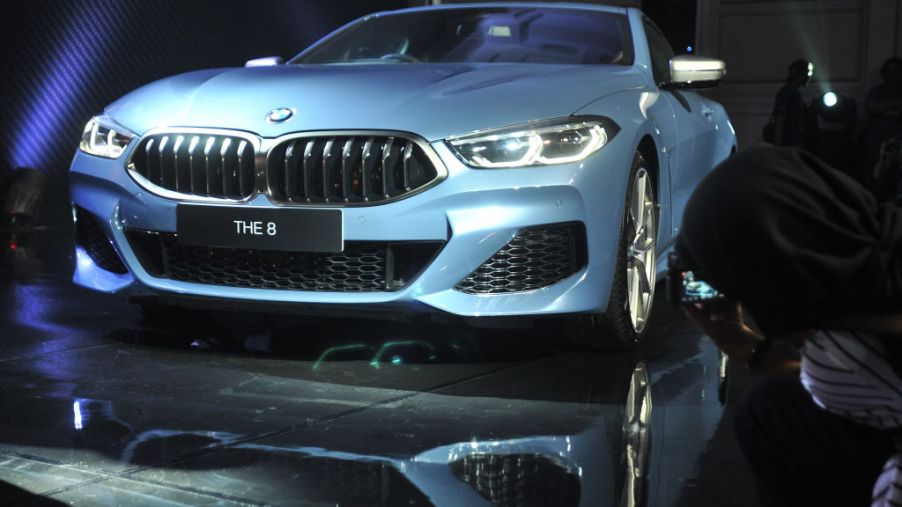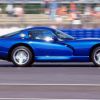
How Does BMW’s Naming System Work?
You’re pretty sure that a BMW 435d xDrive is a 4 Series coupe, but what does the rest of the name mean? So, OK, you guessed that the automaker’s Z4 sDrive23i is a roadster but what kind of configuration is it? And what the heck is a BMW Alpina B3-GT3?
Compared to other automakers’ naming systems, nomenclature for BMW cars seems confusing and often complicated. But the German automaker does have a method to its madness—sort of. We’ll try to break it down for you with some help from BMWBlog.com and Jalopnik.com.
Letters followed by numbers and vice versa
In the world of BMW nomenclature, some vehicle names start with a letter followed by a number, such as the M3. Other names begin with a number followed by a letter, like the 328i.
If a car’s name starts with a letter, it usually will be one of these: “M,” “X,” “Z,” or “i.” These cars have a variety of body styles.
M stands for the BMW Motorsport division, like the previously mentioned M3. The letter X represents a crossover/SUV body style. The X Series vehicles are also numbered from one to seven, which is related to their size, such as the midsize X6, a sports activity coupe. The Z denotes roadster-style two-seaters equipped with rear-wheel drive. The lowercase i designates electric or hybrid cars like the five-door hatchback i3.
There’s one other letter prefix, and it’s more obscure: “B,” which represents Alpina, a company that builds and sells high-performance BMWs. Cars with this prefix are badge-engineered versions of various Beemer series.
BMW passenger cars have names that begin with a number, which represents a series. The series range from 1 through 8, with the 1 Series being the smallest, least expensive car and the 8 Series being the largest and priciest. Originally, odd-numbered series, such as 3, 5, and 7 represented four-door sedans. Even-numbered series names like 2, 4, 6, and 8 were intended for two-door coupes and similar cars.
In more recent years, though, BMW threw a monkey wrench into its nomenclature by expanding the body types of the odd-number series. For example, BMW expanded the 3 Series from a four-door sedan to a two-door convertible, a two-door coupe, a five-door station wagon, a five-door liftback, and a three-door hatchback. Therefore, the series numbering system might not always be a reliable way to tell what body style a car has in a given series.
More letters and a little less logic
BMW’s alphanumeric sequences of names and their exceptions are puzzling, but the letters at the end of these names might not add any clarity, either. A rare few are intuitive, like a lowercase “d” standing for diesel or a little “i” for injection (a fuel-injected engine). You might also recognize familiar ones such as GT (Gran Turismo), “T” for Touring and the “M” after the vehicle name that also indicates a Motorsport version, as with the X6 M.
Others are baffling. While lowercase “td” for turbo diesel makes sense, little “t” for hatchback doesn’t. You might think lowercase “e” would denote electric, like the Audi e-tron. Instead, it represents economy as opposed to engine power.
Lowercase “s” stands for sport but differs from Motorsport because it represents fancier interior options or more horsepower. Finally, don’t forget those suffixes sDrive and xDrive, which don’t quite roll off the tongue. They simply denote rear-wheel drive and all-wheel drive, respectively.
If you think that you just might be getting the hang of BMW‘s naming system logic by now, take a deep breath. Here’s another mind-boggler. Following the series number are two numbers, which originally stood for the engine replacement in cubic centimeters divided by 100. Back in the day, a BMW 325i’s engine displacement was almost 2,500 cubic centimeters, for example.
But as engines evolved over time, this part of the naming convention became more arbitrary, and they no longer matched these numbers to displacement. Take, for example, the 523i with its 2.5-liter engine. That’s another area where the naming logic starts to unravel.
Guidelines for decoding BMW’s alphanumeric soup
So how do you sort out a naming system that started out logically enough and then went haywire later? Doug DeMuro offers advice on how to navigate BMW’s intricate and occasionally whimsical nomenclature.
He suggests that you generalize odd-numbered BMWs as mainstream vehicles and even-numbered ones as sporty. Here are examples: the sedan, wagon, and hatchback in the 3 Series all are sensible, classic German body styles. By comparison, the coupe, convertible, and fastback in the 4 Series are low-slung, sleek and eye-catching.
The same line of thinking applies to the BMW SUVs. The blocky, staid ones belong to the odd-numbered series, like the X3 and X5. The angular kidney grilles, slanty roofs, and bubble butt design of the X4 and X6 signal a more unconventional and sportier styling. The electric cars seem to work similarly, says DeMuro. The i3 is a practical city car while the i8 is a cutting-edge sports car.
But BMW’s naming system stymies even a workable generalization like DeMuro’s. The automaker’s down-to-earth minivan is actually a 2 Series vehicle, putting a dent in his rule of thumb.
It just goes to show that despite our clever ways of trying to demystify BMW’s nomenclature, the automaker’s ever-changing innovation still creates name inconsistencies. We tried, but BMW is way ahead of us.


